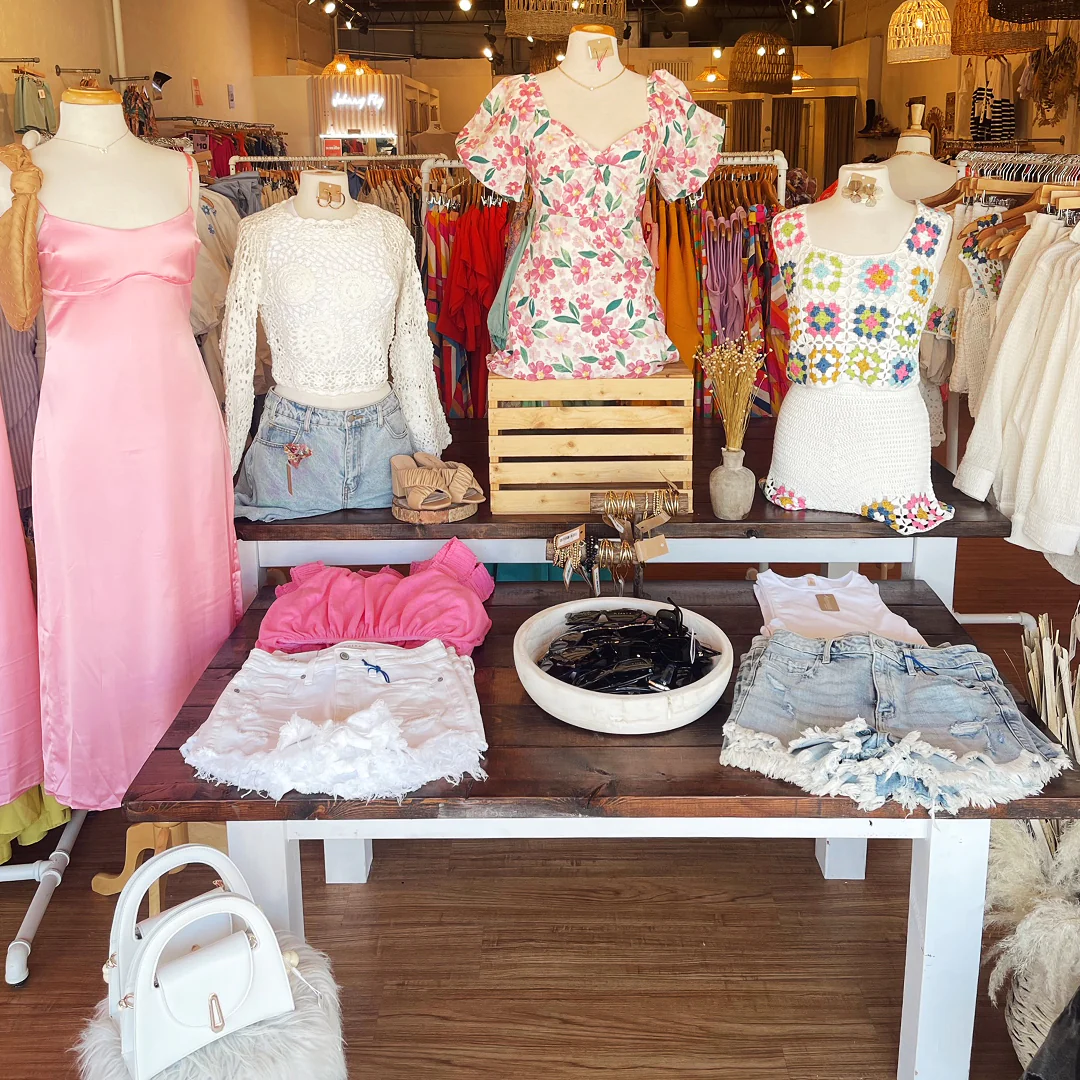A Beginner's Overview to Browsing the Boutique Fashion Scene
A Beginner's Overview to Browsing the Boutique Fashion Scene
Blog Article
Lasting Fashion: Just How Eco-Friendly Clothes Is Shaping the Future of Design
As the style market faces enhancing examination over its ecological impact, the increase of sustainable fashion supplies a promising choice that lines up design with environmental duty. Using ingenious products such as recycled fibers and plant-based materials, alongside sophisticated approaches like electronic and 3D printing, designers are redefining what it implies to be trendy in the modern age. Concurrently, the growing popularity of upcycling and second hand culture is cultivating a shift towards a round economy. Yet, just how does this motion genuinely affect the future trajectory of fashion, and what challenges lie in advance in its prevalent fostering?
Ingenious Lasting Materials
As the fashion industry grapples with its environmental effect, cutting-edge lasting materials have arised as an important service for decreasing environmental footprints. These materials not just reduce reliance on fossil fuels yet additionally reduce unsafe pesticide usage and water usage.
Along with plant-based materials, improvements in biofabrication have resulted in the advancement of lab-grown fabrics. Mycelium natural leather, stemmed from mushroom roots, presents a biodegradable and functional option to animal natural leather. Its production causes significantly reduced carbon exhausts and water use, making it an extra lasting choice for designer looking for to align with environmentally friendly practices.
Recycled products are likewise obtaining grip, with polyester made from recycled plastic bottles standing for a substantial breakthrough. This development not just diverts plastic waste from seas and land fills but likewise lowers power intake compared to creating virgin polyester. With each other, these products highlight the capacity for an extra lasting apparel industry, leading the method for ecologically conscious design and manufacturing.
Eco-Conscious Manufacturing
Building on the developments in sustainable products, the fashion sector is also re-evaluating its manufacturing processes to even more lower environmental influence. Secret techniques consist of lessening water intake, decreasing carbon discharges, and eliminating hazardous chemicals.
One more important element is the decrease of toxic chemicals commonly used in dyeing and finishing fabrics. Eco-conscious manufacturers are changing in the direction of plant-based dyes and waterless dyeing innovations, which not only protect neighborhood ecosystems however additionally boost employee safety. Developments like electronic printing decrease textile waste and energy usage, using a cleaner choice to typical methods.
With the development of blockchain technology, business can currently give detailed insights right into their supply chains, making sure environmentally pleasant and honest practices at each step. As the demand for eco-conscious products expands, producers are compelled to introduce, making sure that the future of fashion is both lasting and trendy.
The Increase of Upcycling
Upcycling, a transformative method in lasting style, entails creatively repurposing disposed of materials into brand-new, high-grade products. This innovative technique not just reduces waste but also reduces the demand for resources, therefore decreasing the ecological impact of clothes manufacturing. By reconstructing and reimagining existing things, designers and fashion brands have the ability to infuse originality right into their collections while promoting ecological responsibility.

In addition, the upcycling movement has actually equipped small businesses and independent developers, that typically lead in development as a result of their dexterity and imagination. By taking advantage of the abundant availability of extra products, these entities add to a round economic climate, showing that fashion can be both elegant and sustainable. With upcycling, the sector takes significant strides in the direction of a much more aware and responsible navigate to these guys future.
Thrift Culture's Impact
The expanding second hand society dramatically reshapes the landscape of sustainable style, highlighting the importance of mindful usage. This cultural shift encourages customers to embrace secondhand apparel, therefore decreasing the need for new garment manufacturing and minimizing ecological effect. Second hand shopping not just prolongs the lifecycle of clothes but likewise reduces the carbon impact related to production, transferring, and disposing of garments.
A crucial aspect of thrift culture is its democratization of fashion. By supplying a large array of designs from different periods at economical rates, thrift shops make style easily accessible to a more comprehensive target market. This availability cultivates a feeling of individuality and creativity, as consumers mix and suit Going Here one-of-a-kind pieces to curate tailored closets without adding to the rapid fashion cycle.
Additionally, thrift society advertises circularity in vogue, straightening with the principles of a round economy. By recirculating garments, the cycle of waste is interrupted, and sources are preserved. This practice supports a change from a linear "take-make-dispose" model to an extra sustainable framework. As more developers and customers welcome second hand society, the garment industry is obliged to adapt, integrating sustainable techniques to fulfill the growing demand for eco-conscious choices.

Future Trends in Style
Fashion's evolution is progressively formed by technological technologies and sustainability-driven efforts. As consumers come to be extra environmentally mindful, the market is reacting with groundbreaking advancements that redefine the future of design. One popular fad is the increase of digital style, where virtual garments can be used in enhanced reality environments, substantially reducing textile waste. This shift not only deals with the digital-savvy consumer but likewise decreases the environmental impact traditionally linked with garment production.
Moreover, the combination of blockchain modern technology offers new opportunities in openness and traceability, allowing consumers to confirm the sustainability qualifications of their clothes. boutique fashion. This ensures liability in supply chains and promotes ethical sourcing methods. 3D printing is yet one more innovation that guarantees to transform making procedures by making it possible for on-demand production, thereby reducing excess supply and waste
As these modern technologies develop, they are poised to transform the fashion landscape, combining style with sustainability. The future of fashion, for that reason, exists in a seamless mix of innovation, development, and ecological obligation.
Verdict
The improvement of the style sector through sustainable practices indicates a pivotal shift in the direction of ecological responsibility. The assimilation of ingenious materials, eco-conscious production strategies, and the embracement of upcycling and second hand society emphasizes a dedication to minimizing eco-friendly impacts. As these methods acquire momentum, they redefine the market's narrative by see here now focusing on sustainable and moral options. This advancement not only straightens fashion with eco-friendly sustainability however also sets a criterion for future trends concentrated on responsibility and advancement.
As the style sector faces enhancing examination over its ecological impact, the rise of sustainable style supplies a promising alternative that lines up design with eco-friendly duty.As the fashion industry grapples with its environmental effect, ingenious lasting products have actually arised as a vital option for lowering eco-friendly impacts. Together, these materials underscore the potential for a more sustainable fashion industry, leading the means for eco aware layout and manufacturing.
Structure on the technologies in lasting products, the fashion industry is also re-evaluating its manufacturing processes to further reduce environmental impact. boutique fashion.Upcycling, a transformative practice in lasting style, includes creatively repurposing disposed of materials into brand-new, high-quality items
Report this page